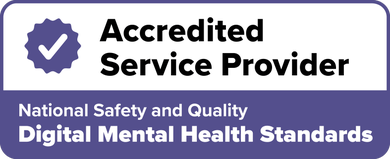Passive-aggressive behaviours explained
In a Nutshell
Passive aggression is a pattern of indirect hostility, often showing up as silent treatment, sarcasm, or avoidance in everyday relationships.
It can quietly damage trust, trigger resentment, and impact emotional wellbeing, especially in romantic relationships and professional environments.
Clear communication, firm boundaries, and, when needed, support through therapy or workplace channels can help you address passive-aggressive behaviours constructively.
Passive-aggressive behaviour is something many of us recognise, even if we struggle to name it sometimes. A partner says nothing is wrong but withdraws emotionally… A colleague repeatedly delays a task and brushes it off with excuses... A friend makes jokes that land just a little too hard…
At first, these moments might seem harmless. But over time, they can quietly strain relationships, build resentment, and leave you feeling confused or dismissed.
Passive aggression often thrives in places where honest communication is avoided. In the sections below, we'll explore what it looks like, why it happens, and how to respond, whether it appears at home, in friendships, or in the workplace.
What is passive aggression?
Passive aggression is a form of indirect expression of negative emotions such as anger, disappointment, or frustration. Instead of openly addressing issues, a person might resist, avoid, or undermine in ways that are difficult to call out directly.
Common forms of passive-aggressive behaviour include:
Silent treatment after a disagreement
Procrastinating or missing deadlines on purpose
Withholding important information
Sarcastic remarks or backhanded compliments
Deliberately underperforming or doing a task incorrectly
Agreeing outwardly but acting in ways that sabotage outcomes
At its core, passive aggression is a form of poor communication. It often occurs when someone feels unsafe or unequipped to express themselves directly, or when they believe their honesty won't be respected or well-received.
Passive-aggressive behaviours in relationships
Romantic and family relationships
In romantic relationships, passive aggression can quietly dismantle emotional safety. A partner may withdraw affection, use the silent treatment or stonewalling to punish, or subtly undermine the other person's needs.
It might also show up as:
Ignoring plans that were agreed upon
Consistently forgetting important dates or requests
Using weaponised incompetence to avoid responsibility
Making sarcastic or guilt-laden comments
Acting as if everything is fine while clearly seething beneath the surface
In families, especially where direct confrontation has been discouraged, passive aggression may become the default mode of conflict. This can be particularly confusing for children and teenagers who receive mixed messages from their caregivers.
Friendships
Among friends, passive aggression often feels like being excluded, subtly mocked, or kept at a distance with no explanation.
It's common for the affected person to feel unsure whether they're overreacting, especially when the behaviour is disguised as humour or unspoken disappointment.
Some common signs are:
Friends cancelling plans at the last minute without reason
Making critical comments under the guise of concern
Repeatedly ignoring calls or texts during conflict
Dishing out praise with a sting (“You finally made it on time!”)
Passive-aggressive behaviours in workplaces
Workplaces are often breeding grounds for passive-aggressive behaviour, especially when direct confrontation is discouraged or poorly managed. The behaviour may appear subtle, but its impact is not.
Here are some examples:
Repeatedly missing deadlines without a clear reason
Sending vague or passive emails
Ignoring workplace messages or instructions
Not sharing critical information with the team
Using sarcasm or humour to disguise criticism
Displaying weaponised incompetence to shift workload
These behaviours overlap with workplace bullying, especially when they become consistent patterns that isolate or undermine a colleague. They also add emotional labour for others, increase workplace stress, and reduce team morale.
In sectors like healthcare and education, where emotional and interpersonal labour is already high, the cumulative toll of such behaviour contributes to burnout, reduced performance, and psychological injury. In response, employee assistance programs (EAPs) are increasingly used in these environments to support staff and also improve the overall workplace culture.
Related: Employee and workplace wellbeing
Why some people resort to passive aggression
Passive-aggressive behaviours often stem from discomfort with emotional vulnerability.
People may fear confrontation, rejection, or escalating conflict. So instead of addressing issues head-on, they express distress in less direct, less confrontational ways.
Here are some contributing factors:
Learned behaviour: In some households or cultures, direct expression of anger is discouraged.
Fear of conflict: The person may believe they’ll be punished or dismissed if they speak up.
Low confidence or self-worth: They may not feel entitled to express their needs or boundaries.
Power imbalances: Subordinates at work, or emotionally dependent partners, may feel indirect resistance is safer than open defiance.
Mental health factors: Conditions like anxiety, trauma histories, or even ADHD paralysis can influence communication.
Past experiences of not being heard: If someone has learned that honesty leads to dismissal or ridicule, they may default to avoidance.
This doesn’t justify the behaviour, but it helps explain where it comes from, as well as what can support change.
Risks and dangers of passive aggression
Passive-aggressive behaviours may seem harmless at first, but they do have lasting impacts over time. The consequences are often emotional and relational. Here are some key risks:
Broken trust and communication line
Growing resentment and unresolved tension
Emotional fatigue or confusion in the receiving person
Escalation into stonewalling, avoidance, or active hostility
Lasting damage to relationships, particularly romantic or family bonds
Misdiagnosis of the problem, leading to more conflict or therapy-resistant issues
Workplace disengagement, inefficiency, or staff turnover
How to respond to passive-aggressive behaviours
Dealing with passive aggression starts with awareness, followed by clear, respectful action.
While it’s not always easy to change another person’s behaviour, you can take steps to respond in a way that protects your wellbeing.
1. Recognise the signs
Be honest with yourself about patterns you're noticing. If you feel anxious around someone, constantly second-guess yourself, or feel like you're being punished without knowing why, it may be passive aggression.
2. Try to address it directly
Use calm and non-accusatory language. Focus on facts and how the passive-aggressive behaviours made you feel, not assumptions or character judgements. Try phrases like:
“I noticed you’ve gone quiet since our chat. Is something bothering you?”
“Your sarcastic remark made me feel disrespect. Maybe that’s not what you intended, so can we talk about it?”
“When the report is delayed without explanation, it puts extra pressure on the team.”
3. Set boundaries
Communicate what’s okay and what isn’t. This isn’t to set ultimatums but to be clear on what you deem healthy and unhealthy for you and your relationships.
For example:
“If you’re upset, I’m open to talking, but I can’t guess what’s going on.”
“I’m not comfortable with sarcasm when we’re trying to sort things out.”
4. Consider your own patterns
Sometimes people engage in passive aggression without realising it. If you're feeling unheard or resentful, it’s worth reflecting on how you yourself communicate and interpret people’s tone, words, or even body language.
Therapy can help explore these patterns in a safe and constructive way.
5. Get support when needed
If the behaviour is consistent, harmful, or affecting your mental health, consider reaching out to a therapist or counsellor, your workplace’s employee assistance program, or a friend or mediator you trust.
You don’t need to manage repeated passive aggression on your own, especially if it’s starting to affect your confidence, mood, or sense of self.
When passive aggression becomes emotional abuse
In some cases, passive-aggressive behaviour is part of a broader pattern of emotional manipulation.
If it’s combined with gaslighting, chronic invalidation, love bombing, or control, it may move into the territory of emotional abuse. This is particularly true in relationships where one person uses silence, guilt, or confusion to gain power over the other.
If this sounds familiar, it’s worth speaking with a therapist, domestic violence support service, or trusted health professional.
Essential Reading
Passive Aggression FAQs
Yes, with self-awareness, support, and a willingness to learn new communication skills. Therapy can be a helpful space to unpack what's behind the behaviour and practice more direct, respectful ways of expressing one's needs.
For both the person using it and the one on the receiving end, it can lead to confusion, anxiety, lowered self-esteem, and difficulty trusting others. In workplaces, it contributes to stress, burnout, and disengagement. In relationships, it can feel like emotional neglect or manipulation.
Consider the context. Forgetfulness happens, but if it follows tension, disagreement, or only occurs with certain tasks or people, it may be passive-aggressive.
Not always. Sometimes people go quiet to regulate their emotions or sit with their thoughts. But if the silence is used as punishment or control, it's likely passive-aggressive. If it's ongoing or combined with emotional withdrawal, it may also be a form of stonewalling.
Passive aggression is indirect resistance to something, often due to suppressed anger. Weaponised incompetence involves pretending not to know how to do something to avoid responsibility. They can overlap, especially in relationships or shared households.
Recommended Therapists Available Now
QLD
Psychologist
If you're feeling overwhelmed, anxious, stuck in your head, or disconnected from yourself, you're not alone. I'm Casey Barnard, a Psychologist and Health Coach who helps ...More
NT
Psychologist
Hi, Im Sean, a registered psychologist who helps adults slow down, make sense of their stress and reconnect with who they are through calm, honest, down-to-earth therapy....More
VIC
Clinical Psychologist
I am a Clinical Psychologist with a Masters qualification and around six years of experience working predominantly in the Victorian public mental health system. My work h...More








